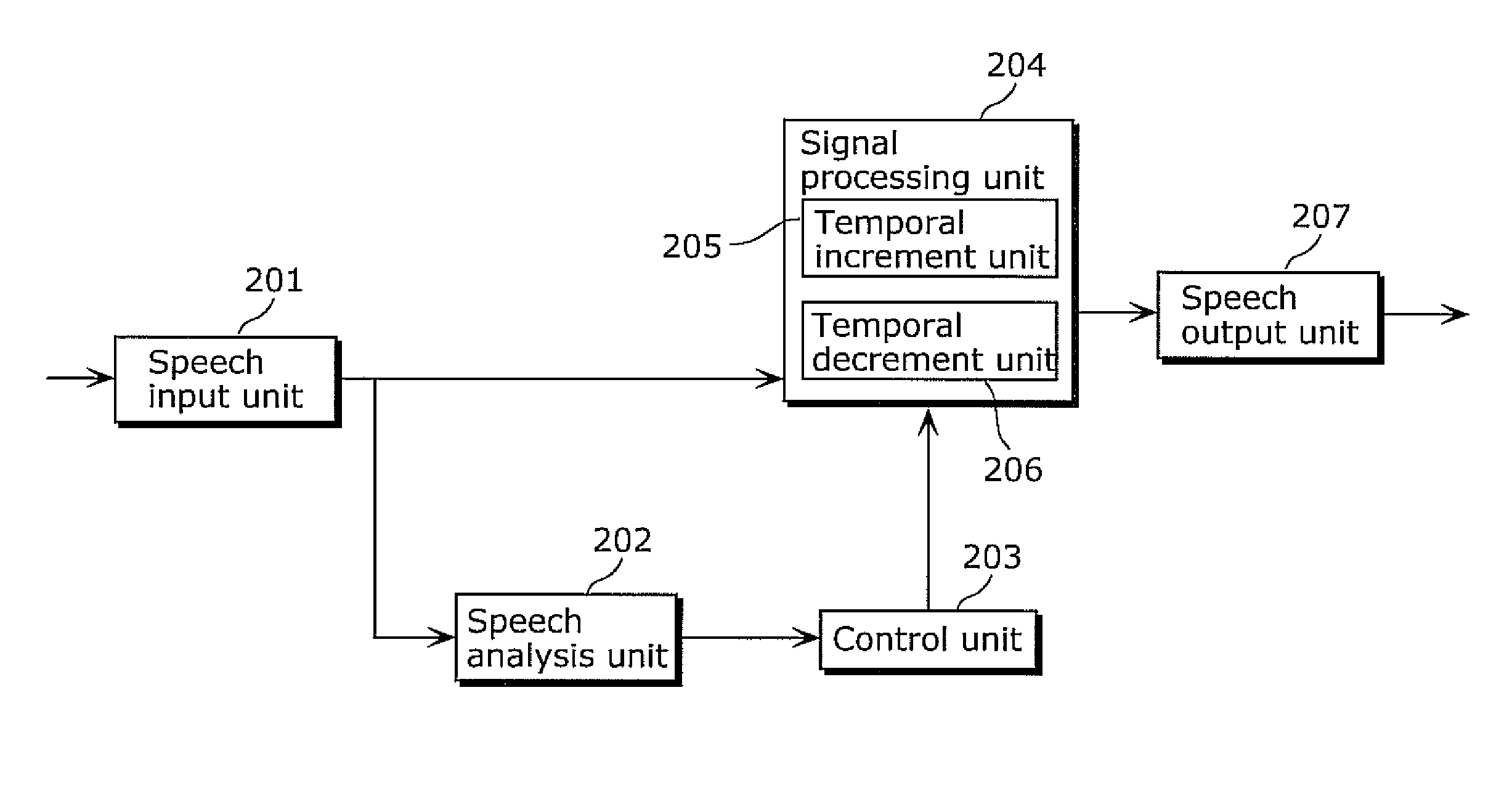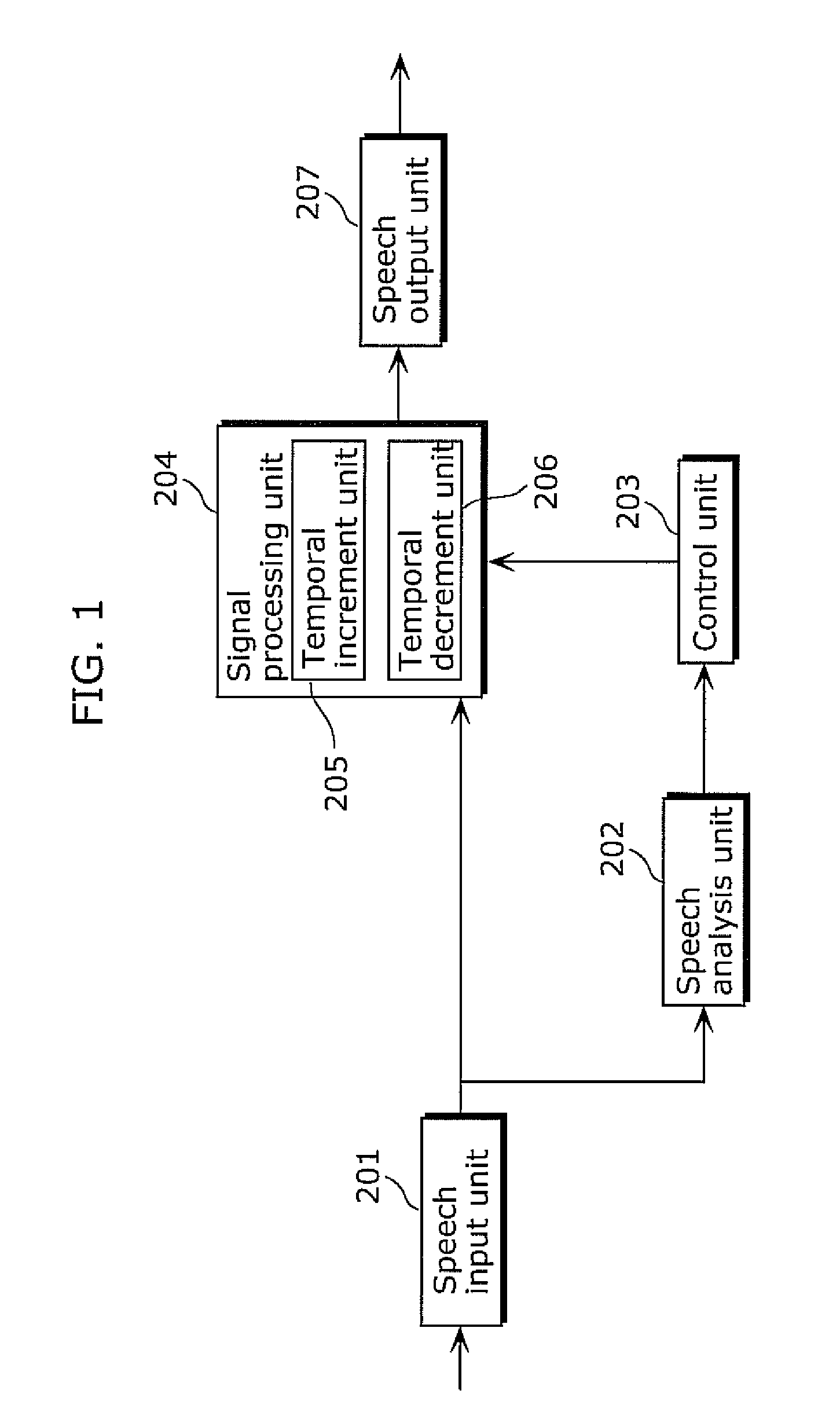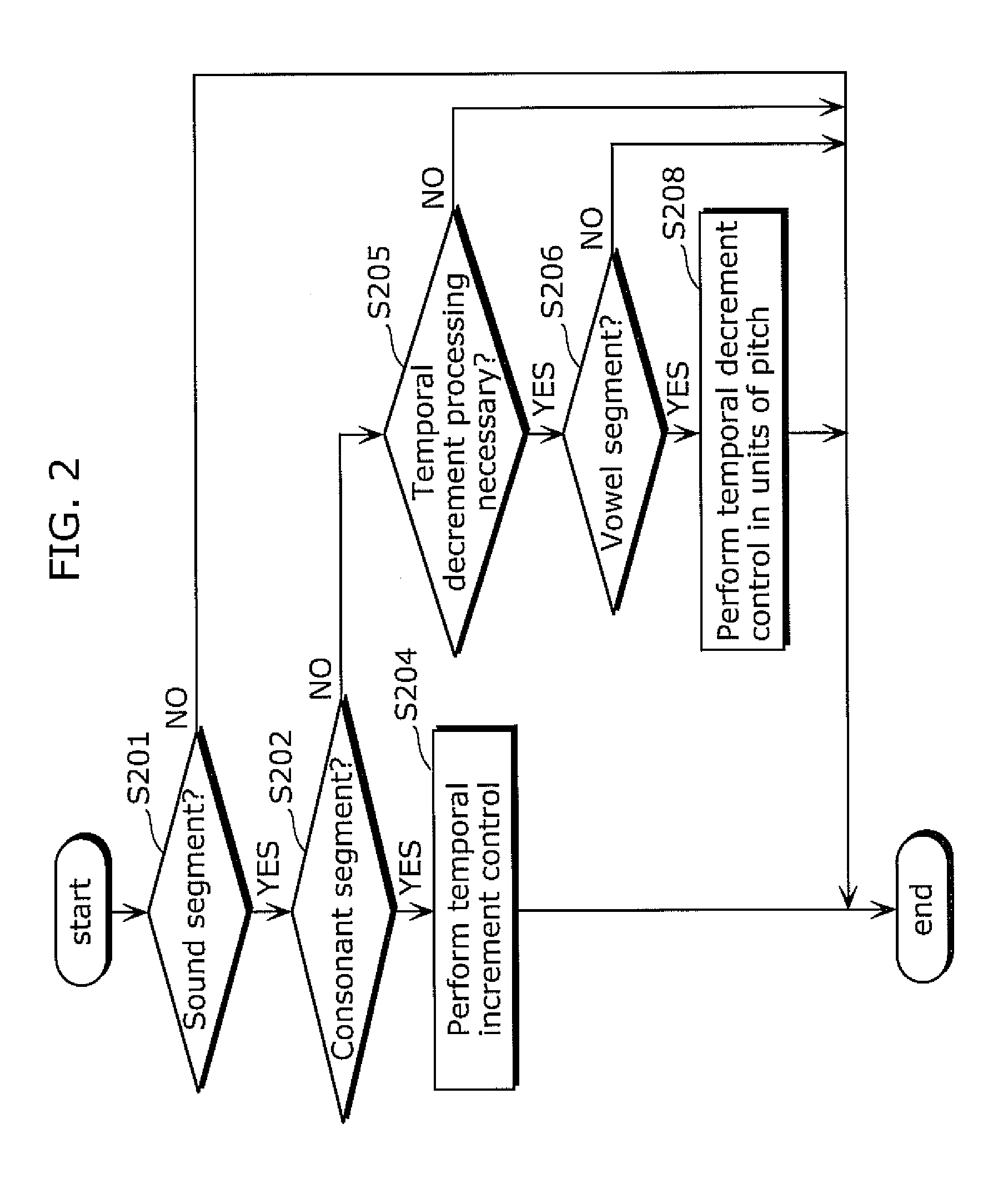Hearing aid and hearing-aid processing method
a processing method and hearing aid technology, applied in the field of hearing aids and hearing aid processing methods, can solve the problems of insufficient hearing improvement effect of hearing aids, sensitiveness of hearing-impaired persons with sensorineural hearing loss to changes in sound volume, and more difficulty in hearing sounds in the high tone range. , to achieve the effect of improving the recognition ratio of consonants, reducing temporal resolution, and improving hearing
- Summary
- Abstract
- Description
- Claims
- Application Information
AI Technical Summary
Benefits of technology
Problems solved by technology
Method used
Image
Examples
first embodiment
[0107]FIG. 1 is a block diagram showing a configuration of a hearing aid according to the first embodiment of the present invention.
[0108]The hearing aid shown in FIG. 1 includes a speech input unit 201, a speech analysis unit 202, a control unit 203, a signal processing unit 204, and a speech output unit 207.
[0109]The speech input unit 201 is, for example, a microphone, an induction coil, or an external input terminal which receives output of a speech communication device or a speech reproduction device, and receives a speech signal from outside and outputs the received speech signal to the signal processing unit 204.
[0110]The speech analysis unit 202 analyzes the speech signal which the speech input unit 201 receives, for a sound type (such as a vowel, a consonant, or the other). Specifically, the speech analysis unit 202 determines whether the received speech signal is a segment acoustically regarded as soundless or a sound segment. Furthermore, the speech analysis unit 202 detec...
second embodiment
[0146]FIG. 5 is a block diagram showing a configuration of a hearing aid according to the second embodiment of the present invention. The hearing aid shown in FIG. 5 includes a speech input unit 201, a speech analysis unit 202, an adjustment unit 301, a control unit 304, a signal processing unit 204, and a speech output unit 207. Components common with FIG. 1 are given the same numerals in FIG. 5 and not described.
[0147]The hearing aid shown in FIG. 5 is different from the hearing aid according to the first embodiment in configurations of the adjustment unit 301, the control unit 304, and the signal processing unit 204.
[0148]The adjustment unit 301 includes a temporal resolution setting unit 302 and a temporal increment and decrement adjustment unit 303, and according to auditory temporal resolution of a user wearing the hearing aid according to an implementation of the present invention, the adjustment unit 301 adjusts an amount of time by which part of speech signals is incremente...
third embodiment
[0158]It is known that the user's temporal resolution changes depending on sound pressure (sound volume). Accordingly, this third embodiment exemplifies, as follows, the case where the increment processing is performed according to sound pressure of a received speech signal.
[0159]FIG. 6 is a block diagram showing a configuration of a hearing aid according to the third embodiment of the present invention. The hearing aid shown in FIG. 6 includes a speech input unit 201, a speech analysis unit 202, an adjustment unit 401, a control unit 404, a signal processing unit 204, and a speech output unit 207. Components common with FIG. 1 or 5 are given the same numerals and not described.
[0160]The hearing aid shown in FIG. 6 is different from the hearing aid according to the first embodiment in configurations of the adjustment unit 401 and the control unit 404.
[0161]The adjustment unit 401 includes a sound pressure calculation unit 402 and a temporal increment and decrement adjustment unit 40...
PUM
 Login to View More
Login to View More Abstract
Description
Claims
Application Information
 Login to View More
Login to View More - R&D
- Intellectual Property
- Life Sciences
- Materials
- Tech Scout
- Unparalleled Data Quality
- Higher Quality Content
- 60% Fewer Hallucinations
Browse by: Latest US Patents, China's latest patents, Technical Efficacy Thesaurus, Application Domain, Technology Topic, Popular Technical Reports.
© 2025 PatSnap. All rights reserved.Legal|Privacy policy|Modern Slavery Act Transparency Statement|Sitemap|About US| Contact US: help@patsnap.com



